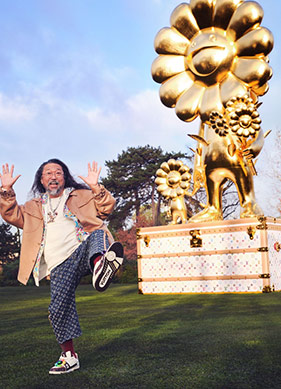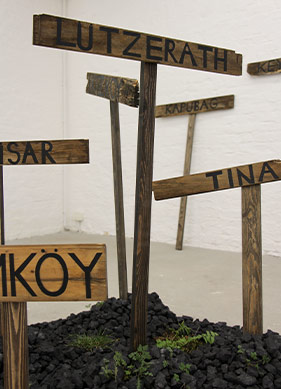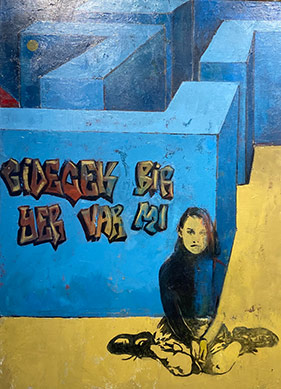


Hot Spot Istanbul
Zürih’te yer alan Haus Konstruktiv, Hot Spot Istanbul sergisiyle 1940’lı yıllardan bugüne dek Türkiye’deki sanat üretiminden örnekleri geniş bir perspektifle sunuyor. Serginin küratörü Dorothea Strauss: Bu sergi, Türkiye’den sanatın heterojen yapısını ortaya koyuyor.Dorothea Strauss ile Söyleşi...

Hot Spot Istanbul, Türkiye’den sanata dair geniş ve birbirinden farklı dönemleri içeren bir perspektif sunuyor. Böyle bir sergiye nasıl karar verdiniz?
Hot Spot Istanbul, Türkiye’den sanatın tarihi ve bugününe dair geniş bir içerik sunma fikrinden doğdu. Başlangıç noktamızı ise sergileyeceğimiz işlerin Museum Haus Konstruktiv’deki konstrüktif, somut ve kavramsal işlerle kuracağı diyalog belirledi; temel olarak farklı dönemler ve nesiller arasında bir köprü ve bağlantı noktaları bulmaya çalıştık. İnsanlarla konuştukça 1940’ların sonuna başlayan Türk soyut sanatı ve 70’lerin sonlarında başlayan, bugün devam eden performatif, minimalist ve kavramsal sanat arasında çok az bağ kurulduğunu gördük. Bununla birlikte, bu serginin alt başlığının ‘Bir Araştırma Biçimi Olarak Sergi’ olmasına karar verdik.
Hot Spot Istanbul covers a very wide spectrum of art from Turkey. What made you decide to realize this exhibition?
HOT SPOT ISTANBUL is by no means intended to present a comprehensive insight into Turkish art history or into the present-day art scene in Istanbul. Rather, we took as our starting point the works at Museum Haus Konstruktiv, i.e. constructive, concrete and conceptual art in its dialogue with our present day, and – on this basis – we wanted to find bridges, links and connecting pieces between the generations. As we spoke to people, it became clear to us that there has so far been very little cross-generational treatment of Turkish abstraction from the late 1940s until the development of performative, minimalist and conceptual directions in the 1970s and until today’s concept art. So it gradually became clear to us that the main focus of HOTSPOT ISTANBUL should be the topic of Exhibition as a Form of Research.
Bu serginin izleyicize ve özellikle Türkiye’den sanata dair bir fikir sahibi olmayan kişilere ne söylemesini tercih ediyorsunuz?
Hot Spot Istanbul’da birçok farklı bireysel yaklaşım görebiliyoruz; serginin tüm bölümleri kendi içinde özerk bir yapıya sahipken içerik bağlamında baktığınızda tarihsel olduğu kadar farklı kültürlerin etkileşimlerini de bir
arada barındıran bir bağ kurabiliyorsunuz. Burada yine; farklı gelişmeleri öngören, düz bir zamansallığa, kültüre ve tarihe dair durağanlığı bozan ve değiştirenin yine sanatçı olduğunu görüyoruz.
‘’Türk sanatı nedir?’’ sorusunu biz de, proje ortaklarımız da hep sorduk. Sonunda, Türk sanatının İsviçre sanatı veya herhangi bir milleti temsil eden sanat kadar heterojen olduğuna karar verdik. Yine de, daha derine ve başlangıca gitmenin zihin açıcı olduğunu düşündük. Sonuç olarak, bu düşüncelerin kelimelere dökülebilmesi çok zor, çünkü formüle edildiklerinde yine belirsizlik yaşıyoruz ve zemin daha da kayganlaşıyor. Diğer taraftan bu kaygan zemin; kimliğe, zihnin gücüne, arzu imgelerine ve daha derine gitmeye dair güçlü sanatsal tavırlar ortaya çıkmasına sebep oldu.
What do you prefer this exhibition to tell to the audience and especially those who have no idea about the art from Turkey?
In HOT SPOT ISTANBUL we can discover numerous individual positions, and each chapter of the exhibition claims to be autonomous. Seen in context, however, we can clearly discern connections between the history of art and the present day as well as between different cultural influences. Again and again, we can see that it is the artists who are and always have been capable of anticipating certain developments and of dismantling both the linear timescale and indeed any supposedly fixed assignments in terms of either culture or art history.
But what is Turkish art? It is a question which we and our project partners kept asking ourselves. We agreed that Turkish art is now just as heterogeneous as Swiss art or indeed any supposedly national art. Nevertheless it can be enlightening to reflect upon its deeper roots. However, such thoughts are not easy to put into words, and as soon as they have been formulated, we experience a strange restlessness, because we are suddenly on rather shaky ground. And yet it is on this shaky ground that we found some powerful artistic stimuli for a reflection upon identity, upon the power of the mind, upon images of yearning, upon deconstruction and upon going into depth.
Modernist, konstrüktivist dönemden sanatçıları güncel sanatçılarla bir araya getirdiğiniz bu serginin tarihsel bir çizgi izlemediğini söyleyebilir miyiz? Böyleyse, serginin yapısını ve küratöryel yaklaşımınızı anlatabilir misiniz?
Bir şekilde, bunun klasik anlamda bir grup sergi olmayacağını anladık, fakat farklı perspektifleri, tematik alanları ve farklı temsil biçimlerini birçok bölümde, tek bir başlık altında bir araya getirdik: HOT SPOT ISTANBUL bu yaklaşımla, beş bölüme oluştu.
Müzenin girişindeki geniş alanda yer alan ilk bölüm, tüm projeye de bir giriş sağlıyor; dikkatimizi sürece ve yorumlamaya yönelik işlere yönlendiriyor. Araştırmaya odaklı çalışma yönteminden dolayı Can Altay, sergiyi şekillendiren ve serginin oluşmasında öncülük eden farklı sanatçıların 25 işini bir araya getirdiği deneysel bir mekan yaratmak üzere davet edildi. Altay’ın işi, mekanda bulunan birbirinden farklı yapıya ve yerleştirmeye dair unsurları bir araya getiriyor. Altay bu işe ‘Bu İstanbul değil, bu sizsiniz’ adını verdi. İlk bölüm tüm serginin DNA’sını; sergideki sürece yönelik yöntemi ve belirli işleri ortaya çıkarıyor. Can Altay’ın yerleştirmesini başlangıç noktasına koyarak sergide analitik ve görsel bir giriş noktası belirlemiş olduk. Bu başlangıcı, Ekrem Yalçındağ ve Ebru Uygun’un bir yandan zamanın boyutunu, diğer yandan performatif yapıbozumu gösteren işleri takip ediyor. Dördüncü bölümde ise Sarkis, Arslan Sükan, Erdem Taşdelen, Nejat Satı, Ahmet Öktem, Serhat Kiraz ve Renée Levi’nin işleri yer alıyor. Dördüncü kattaki son bölüm – ya da ilk mi? – dört tarihsel yaklaşımı gösteriyor: Ömer Ulçuç, Nejat Melih Devrim, Fahrelnisa Zeid ve Mübin Orhon. Bu sanatçılar dünyayı Batı ve Doğu gibi bölümlere ayırmayan, dünyanın her noktasına giden, buralarda evinde hisseden kişilerdi. Sergideki en erken döneme ait iş 1947 yılına ait bir Fahrelnisa Zeid yapıtı; en son dönemde üretilen işler ise Renée Levi, Ebru Uygun, Arslan Sükan, Ekrem Yalçındağ ve Can Altay’a ait.
As you brought the modernists, constructivist artists works together with contemporary and young artists works on display, can we say that the exhibition doesn't follow a historical order? If not, could you please tell about the structure and the curatorial approach you chose to follow in this exhibition?
For some reason we soon realized that the exhibition could not be a group exhibition in the traditional sense, but that we wanted to illustrate different perspectives, thematic areas and indeed different forms of representation under a variety of chapter headings: HOT SPOT ISTANBUL has therefore been divided into five chapters.
The first chapter in the large entrance hall offers special access to the entire project, directing our attention towards process-like structures and interpretative options from the very beginning: Because of his research-like working method, Can Altay was invited to participate and was asked to work with us on a very special experimential space, using 25 selected works by different artists who had been pioneers in the development of this exhibition. Altay’s work consists of different architectural, installational elements as well as suspended elements protruding into the room. He gave it the name It’s not Istanbul, it’s you. This first chapter was to capture the DNA of the entire exhibition, i.e. the process-like method that was applied and the selection of very specific works. By putting Can Altay’s installation right at the beginning, we gave the exhibition a start that was both analytical and spectacular. This start is followed by presentations of individual works by Ekrem Yalçındağ and Ebru Uygun – works that illustrate a dimension of time, on the one hand, and performative deconstruction, on the other. The fourth chapter is a groupshow with artists like Sarkis, Arslan Sükan, Erdem Taşdelen, Nejat Satı, Ahmet Öktem, Serhat Kiraz and Renée Levi. The last chapter, on the fourth floor – or is it the first one? – shows four historical positions: Uluç, Nejat Melih Devrim, Zeid and Orhon – personalities who did
As you brought the modernists, constructivist artists works together with contemporary and young artists works on display, can we say that the exhibition doesn't follow a historical order? If not, could you please tell about the structure and the curatorial approach you chose to follow in this exhibition?
For some reason we soon realized that the exhibition could not be a group exhibition in the traditional sense, but that we wanted to illustrate different perspectives, thematic areas and indeed different forms of representation under a variety of chapter headings: HOT SPOT ISTANBUL has therefore been divided into five chapters.
The first chapter in the large entrance hall offers special access to the entire project, directing our attention towards process-like structures and interpretative options from the very beginning: Because of his research-like working method, Can Altay was invited to participate and was asked to work with us on a very special experimential space, using 25 selected works by different artists who had been pioneers in the development of this exhibition. Altay’s work consists of different architectural, installational elements as well as suspended elements protruding into the room. He gave it the name It’s not Istanbul, it’s you. This first chapter was to capture the DNA of the entire exhibition, i.e. the process-like method that was applied and the selection of very specific works. By putting Can Altay’s installation right at the beginning, we gave the exhibition a start that was both analytical and spectacular. This start is followed by presentations of individual works by Ekrem Yalçındağ and Ebru Uygun – works that illustrate a dimension of time, on the one hand, and performative deconstruction, on the other. The fourth chapter is a groupshow with artists like Sarkis, Arslan Sükan, Erdem Taşdelen, Nejat Satı, Ahmet Öktem, Serhat Kiraz and Renée Levi. The last chapter, on the fourth floor – or is it the first one? – shows four historical positions: Uluç, Nejat Melih Devrim, Zeid and Orhon – personalities who did
As you brought the modernists, constructivist artists works together with contemporary and young artists works on display, can we say that the exhibition doesn't follow a historical order? If not, could you please tell about the structure and the curatorial approach you chose to follow in this exhibition?
For some reason we soon realized that the exhibition could not be a group exhibition in the traditional sense, but that we wanted to illustrate different perspectives, thematic areas and indeed different forms of representation under a variety of chapter headings: HOT SPOT ISTANBUL has therefore been divided into five chapters.
The first chapter in the large entrance hall offers special access to the entire project, directing our attention towards process-like structures and interpretative options from the very beginning: Because of his research-like working method, Can Altay was invited to participate and was asked to work with us on a very special experimential space, using 25 selected works by different artists who had been pioneers in the development of this exhibition. Altay’s work consists of different architectural, installational elements as well as suspended elements protruding into the room. He gave it the name It’s not Istanbul, it’s you. This first chapter was to capture the DNA of the entire exhibition, i.e. the process-like method that was applied and the selection of very specific works. By putting Can Altay’s installation right at the beginning, we gave the exhibition a start that was both analytical and spectacular. This start is followed by presentations of individual works by Ekrem Yalçındağ and Ebru Uygun – works that illustrate a dimension of time, on the one hand, and performative deconstruction, on the other. The fourth chapter is a groupshow with artists like Sarkis, Arslan Sükan, Erdem Taşdelen, Nejat Satı, Ahmet Öktem, Serhat Kiraz and Renée Levi. The last chapter, on the fourth floor – or is it the first one? – shows four historical positions: Uluç, Nejat Melih Devrim, Zeid and Orhon – personalities who did














